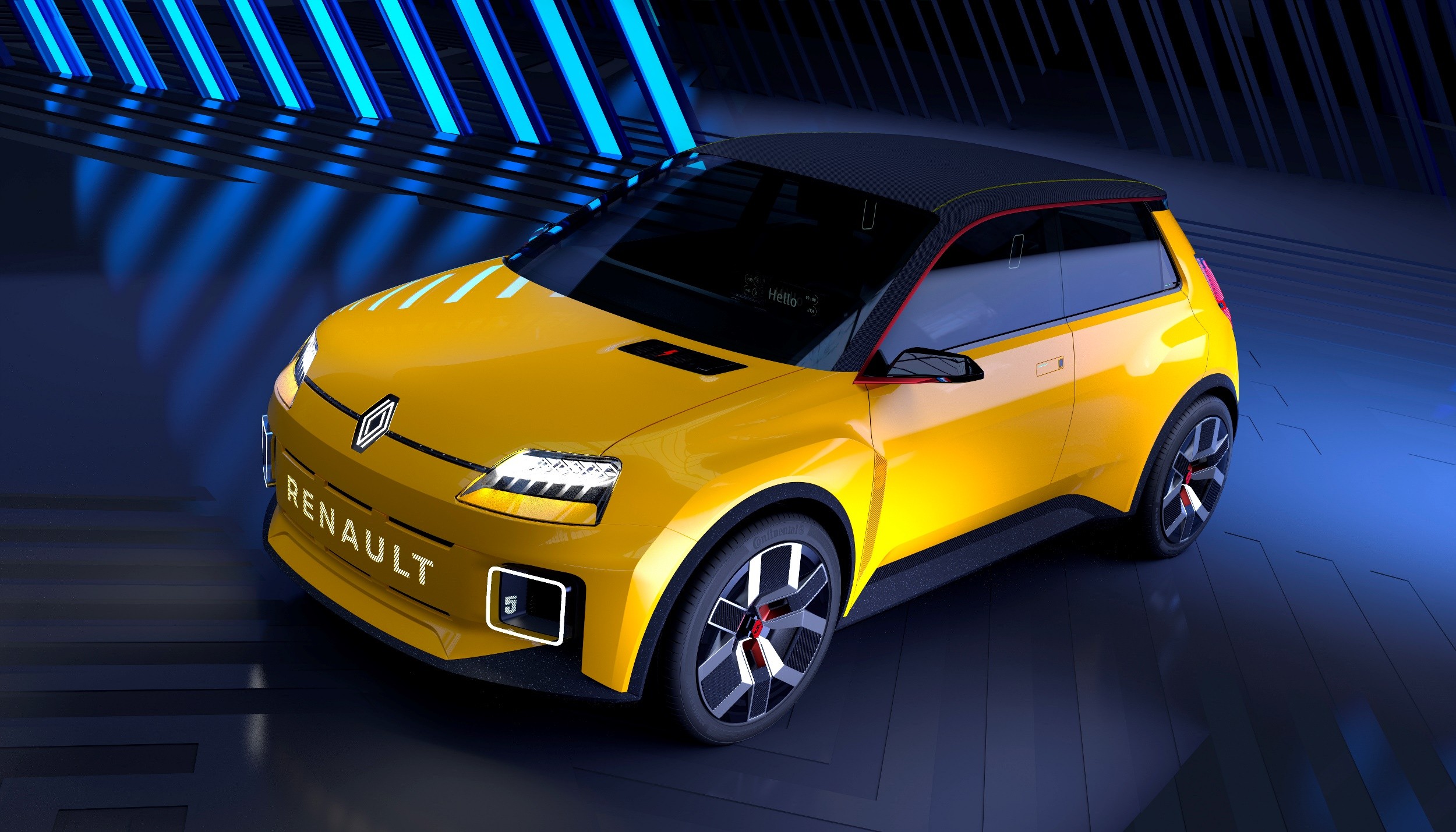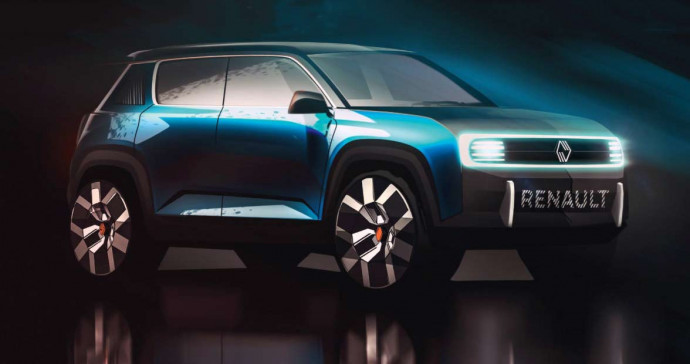Renault is embracing the electric vehicle revolution with the introduction of two retro-inspired models: the R5 supermini and the 4 crossover. While the latter won’t hit production until 2025, we’ve already gathered substantial details about its design and technical specifications. In this article, we’ll delve into all the available information on the upcoming EV, complemented by an informative chart highlighting its key features.
The French automaker announced the 4 as part of its electrification strategy in June 2021, offering a glimpse of the grille, lighting signature, and silhouettes of the passenger and LCV variants. These modern interpretations pay homage to the iconic 4L hatchback (1961-1992) and the equivalent 4 Fourgonette (1965-1992) van. However, the most revealing preview of the production model was the Renault 4Ever Trophy Concept, which debuted in Paris in October 2022, showcasing the vehicle’s rugged styling and budget-oriented character.

Our artist has crafted a highly accurate representation of the 2025 Renault 4 crossover, drawing inspiration from official teasers and last year’s concept. The renderings capture the essence of the concept while adapting certain elements for production. These changes are expected to include smaller diameter wheels, conventional mirrors and door handles, a more subtle body kit, and the omission of the extreme off-road equipment featured in the concept. Additionally, the futuristic hollow bonnet, though intriguing, is likely to be sacrificed for practicality.
The design of the 4 draws clear inspiration from the original 4L, evident in the simple black grille housing the LED headlights, the iconic trapezoidal rear side windows, the pronounced fenders, and the pill-shaped taillights. Simultaneously, the generous ground clearance, substantial plastic cladding on the boxy wheel arches, and large unpainted sections on the bumpers lend it an adventurous, SUV-like appearance reminiscent of its Dacia Duster stablemate.
Stepping inside, the Renault 4’s interior is expected to embody the no-frills character of the exterior, featuring a minimalist design that prioritizes practicality and durability. Despite its compact size, the electric platform is set to offer a five-seater cabin and a generous boot for the segment. Renault may take a page from Dacia’s playbook by incorporating a smartphone stand, a smaller-than-usual digital cockpit, and recycled materials to enhance affordability and sustainability.
Renault’s approach of blending retro and modern design elements will be a unique selling point for the R5 and 4 models, setting them apart from the rest of the lineup. This strategy, akin to Ford’s approach with the Mustang and Bronco, allows designers to “tell stories from the past.” Other electric vehicles, such as the Fiat 500e, Honda E, and MINI Cooper SE, have also successfully tapped into their automaker’s heritage for styling inspiration.

Under the hood, the Renault 4 will be built on a stretched version of the CMF-BEV architecture, shared with the R5, the Alpine A5 hot hatch, and the electric successors of the Nissan Micra and Juke. Moreover, the new low-cost batteries will incorporate nickel, manganese, and cobalt technology (NMW) and will be manufactured in France, aligning with Renault’s commitment to producing the 4 at Renault Group’s ElectriCity hub.
The R5 supermini and 4 crossovers are poised to be zero-emission counterparts to the ICE-powered Clio and Captur, occupying the B-Segment when they arrive in the next two years. These retro-inspired EVs will join the Megane E-Tech and the upcoming Scenic E-Tech in Renault’s future passenger EV lineup, while the 4 Furgonette van will complement the Kangoo E-Tech and Master E-Tech in the realm of light commercial vehicles.
Chart: Key Features of the 2025 Renault 4 Crossover
| Feature | Specification |
|---|---|
| Length | 4,160 mm (163.8 inches) |
| Wheelbase | 2,570 mm (101.2 inches) |
| Segment | B-SUV |
| Exterior Design | Retro-inspired, rugged SUV aesthetics |
| Interior Design | Minimalist, practical, and durable |
| Seating Capacity | Five |
| Cargo Space | Spacious boot for the segment |
| Powertrain | Electric, front-mounted motor (specifics undisclosed) |
| Battery Technology | Nickel, manganese, and cobalt (NMW) |
| Expected Range (WLTP) | Up to 400 km (249 miles) |
| Battery Production | France (Renault Group’s ElectriCity hub) |
Renault’s commitment to electrification and blending past and present design elements in the Renault 4 Crossover promises an exciting addition to the world of electric vehicles, offering a unique blend of nostalgia and modernity. Keep an eye out for this retro-inspired EV as it makes its debut in 2025, redefining the B-SUV segment with its distinctive charm and eco-friendly technology.

